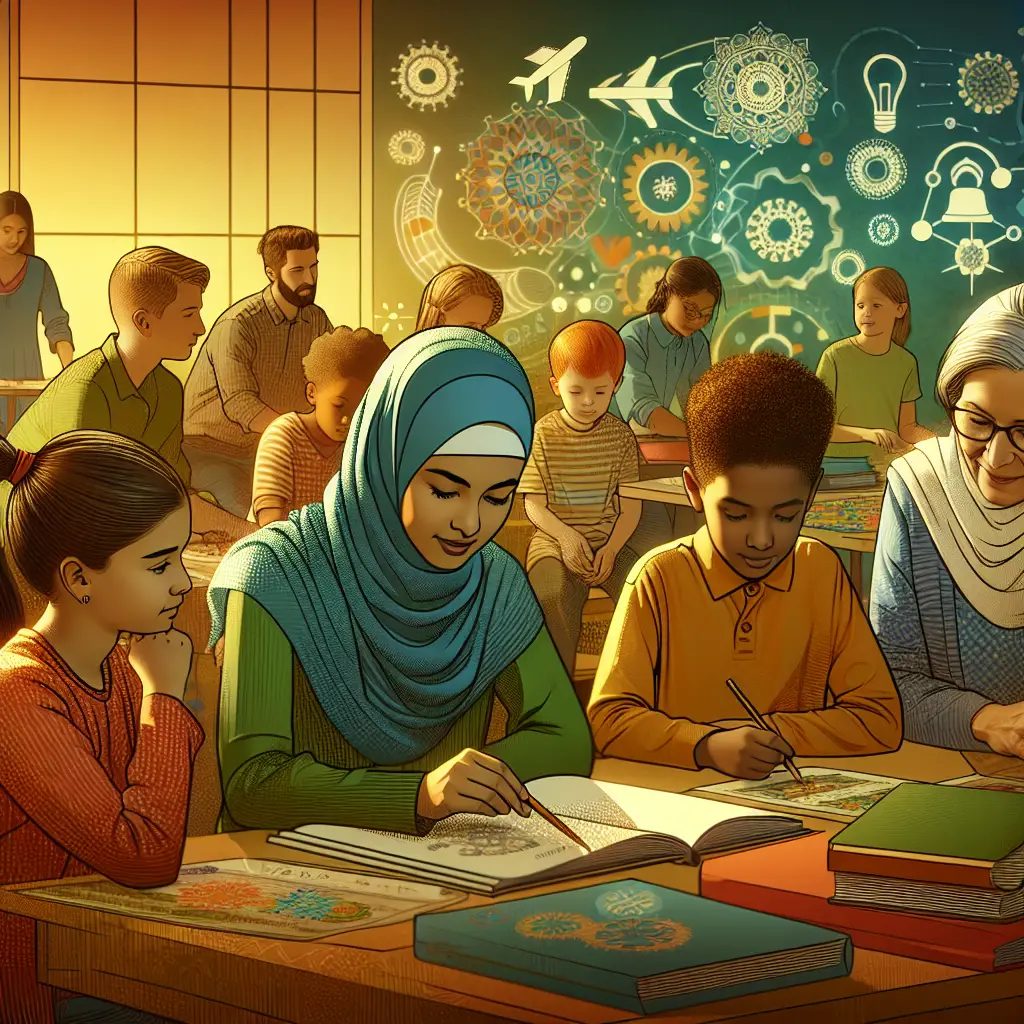
Navigating the Challenges: Proven Strategies for Supporting Children with Learning Disabilities and Behavioral Issues
Introduction
In a world that increasingly values inclusivity and diversity, the challenges faced by children with learning disabilities and behavioral issues can seem overwhelming. According to the National Center for Learning Disabilities, approximately 1 in 5 children in the United States experiences learning challenges that affect their academic performance and social interactions. This staggering statistic underscores the importance of proactive strategies in supporting these children to thrive both academically and emotionally.
"Navigating the Challenges: Strategies for Supporting Children with Learning Disabilities and Behavioral Issues" is not just a guideline; it’s a lifeline for parents, educators, and caregivers seeking effective strategies. This comprehensive article aims to provide actionable insights, relatable case studies, and expert advice to help those who play a role in the lives of these children become empowered advocates for their success.
Understanding Learning Disabilities and Behavioral Issues
What are Learning Disabilities?
Learning disabilities (LD) are neurological disorders that affect how individuals process information. They can impact skills such as reading, writing, math, and communication, making academic tasks particularly challenging. Some common types of learning disabilities include:
- Dyslexia: Difficulty with reading fluency and comprehension.
- Dysgraphia: Challenges with writing, spelling, and organizing thoughts.
- Dyscalculia: Difficulty in understanding numbers and mathematical concepts.
Behavioral Issues: An Overview
Behavioral issues encompass a range of challenges that can interfere with a child’s ability to engage socially and academically. Conditions such as Attention Deficit Hyperactivity Disorder (ADHD), Oppositional Defiant Disorder (ODD), and Autism Spectrum Disorder (ASD) are examples of behavioral issues that can complicate the educational experience.
Understanding that both learning disabilities and behavioral issues can vary greatly among children is essential. Some may struggle more with one area than another, while others may experience a combination of these challenges.
Creating an Inclusive Environment
Promote Awareness and Understanding
One critical step in navigating the challenges faced by children with learning disabilities and behavioral issues is fostering a culture of awareness and understanding among peers, educators, and parents. Here are some practical steps to consider:
-
Training for Staff: Providing teachers and staff with training on LD and behavioral issues ensures they can recognize signs early and respond appropriately.
- Peer Education: Implement programs for students to learn about differences and foster an atmosphere of empathy and support.
Case Study: A School’s Approach to Inclusivity
At Lincoln Elementary, the administration developed a Peer Support Program that pairs neurotypical students with those experiencing learning disabilities. This initiative has reduced incidents of bullying and increased the sense of belonging for all students. The success of this program highlights the importance of peer relationships in creating a supportive learning environment.
Classroom Modifications
Physical classroom modifications can make a significant difference in helping children feel comfortable and supported. Some strategies include:
- Flexible Seating Arrangements: Offering bean bags, standing desks, and quiet corners can help children choose their optimal working environment.
- Visual Aids: Utilizing charts, diagrams, and multi-sensory learning resources can aid in comprehension.
Chart 1: Common Classroom Modifications
| Modification Type | Description | Benefits |
|---|---|---|
| Flexible Seating | Variety of seating options based on comfort | Enhances focus and engagement |
| Visual Aids | Use of diagrams, pictures, and hands-on materials | Aids memory retention and understanding |
| Breakout Areas | Designated quiet spaces for breaks | Reduces sensory overload and anxiety |
Tailored Educational Strategies
Individualized Education Plans (IEPs)
One of the cornerstones of navigating the challenges for children with learning disabilities and behavioral issues is the creation of Individualized Education Plans (IEPs). An IEP is a legal document that outlines the specific educational goals, accommodations, and supports necessary for a child’s success.
Key Components of Effective IEPs:
- Specific Goals: Clearly defined academic and behavioral objectives that align with the child’s needs.
- Measurable Outcomes: Criteria to assess progress periodically.
- Parent Involvement: Including parents in the development process ensures all perspectives are considered.
Case Study: Successful IEP Implementation
At Maple High School, the team of educators and parents worked collaboratively to develop IEPs for students with varying needs. Outcomes showed that students met 90% of their academic goals by utilizing tailored strategies such as consistent check-ins, modified homework assignments, and access to technology. This demonstrates that with rigorously crafted IEPs, children are more likely to thrive academically.
Evidence-Based Teaching Techniques
Certain teaching methods, like Universal Design for Learning (UDL), offer a flexible approach that accommodates individual learning needs. Strategies include:
- Multiple Means of Representation: Presenting information in various formats, such as visual, auditory, and kinesthetic.
- Multiple Means of Engagement: Using activities that tap into students’ interests to maintain motivation.
Behavioral Support Strategies
Positive Behavioral Interventions and Supports (PBIS)
Navigating the challenges associated with behavioral issues often involves implementing Positive Behavioral Interventions and Supports (PBIS). PBIS is a proactive approach aimed at establishing a school culture that encourages positive behaviors.
- Clear Expectations: Setting clear behavior expectations for all students.
- Positive Reinforcement: Regularly recognizing and rewarding positive behaviors to increase their occurrence.
Case Study: PBIS in Action at Riverside High
Riverside High adopted PBIS, which resulted in a 40% decrease in office referrals for behavioral issues within one year. By establishing clear procedures and offering incentives for good behavior, students demonstrated more engagement and respect for peers and staff alike.
Social Skills Training
Incorporating social skills training into daily routines is vital for children experiencing behavioral challenges. Helping students develop skills such as:
- Emotional Regulation: Teaching techniques to manage frustration and anxiety.
- Effective Communication: Practicing turn-taking and active listening.
Table 2: Social Skills Training Activities
| Activity | Description | Goals |
|---|---|---|
| Role-Playing | Simulating social scenarios | Enhance communication and conflict resolution |
| Group Discussions | Structured conversations among peers | Promote effective listening and empathy |
| Art Projects | Collaborative projects that require teamwork | Encourage cooperation and build relationships |
Involving Families and Communities
Parent Training Programs
Navigating the challenges associated with learning disabilities and behavioral issues is not solely the responsibility of the school. Parents play a critical role and can benefit from training programs to help them support their children at home.
- Workshops on LD: Providing educational sessions about learning disabilities can help parents advocate effectively for their children.
- Home Strategies: Offering tools and resources parents can implement at home, such as reading strategies and behavioral techniques.
Community Involvement
Engaging community resources can expand the support network available to families. Partnerships with local organizations can provide additional services, such as tutoring and counseling.
Case Study: Community Engagement at Elmwood Center
Elmwood Center formed partnerships with local therapy services and tutoring centers. Through these collaborations, families gained access to resources that improved academic performance and emotional well-being for children, showing that community involvement enhances educational success.
Conclusion
Navigating the challenges faced by children with learning disabilities and behavioral issues may seem daunting, but with effective strategies in place, these children can thrive. From creating inclusive classroom environments to involving families and communities, each step brings us closer to fostering a culture of understanding and support.
By implementing practices such as tailored IEPs, PBIS, and social skills training, we can ensure that all children receive the guidance and resources necessary for success. Let us inspire change, advocate for exceptional learners, and guide children toward a brighter future.
FAQs
1. What are the early signs of learning disabilities?
Early signs can include difficulty with reading or writing, trouble with math concepts, or challenges following verbal instructions. If a child is consistently struggling, consulting with a specialist can provide clarity.
2. How can I support my child with homework?
Creating a designated homework space, breaking tasks into manageable parts, and praising efforts can help children with learning disabilities feel more confident in completing assignments.
3. Are all learning disabilities diagnosed in childhood?
While most learning disabilities are identified during childhood, some individuals may not receive a diagnosis until adolescence or adulthood. It’s vital to seek assessment if concerns persist.
4. What resources are available for parents?
Many organizations such as the Learning Disabilities Association of America and local advocacy groups offer workshops, support groups, and resources to help parents navigate challenges.
5. How can teachers address behavioral issues in the classroom?
Implementing classroom management strategies, using positive reinforcement, and providing clear expectations can help create a more conducive learning environment for all students.
This comprehensive guide on Navigating the Challenges: Strategies for Supporting Children with Learning Disabilities and Behavioral Issues is intended to captivate, inform, and empower readers. By embracing inclusivity and understanding, we can shapeshift the educational landscape and make lasting impacts on the lives of our children.




Trending Now
Navigating Language Learning: A Guide for Students with Learning Disabilities
Unlocking Resilience: Self-Improvement Practices for Life’s Challenges
Dreams and Rest: Exploring the Four Stages of Sleep Cycles
Breaking Down Barriers: The Role of Behavioral Psychology in Conflict Resolution at Work
Time is on Your Side: Effective Strategies for Student Time Management
From Silence to Harmony: Boosting Relationship Communication Skills
Related Stories
Navigating Language Learning: A Guide for Students with Learning Disabilities
Beyond the Label: The Psychological Impact of Learning Disabilities and Their Connection to Depression
Navigating Challenges: Effective Tools for Improving Organization in Students with Learning Disabilities
Navigating Challenges: Strategies for Educators to Support Students with Visual Processing Disorders
Breaking Barriers: Advocating for Inclusive Education for All Children
Breaking Barriers: Assistive Technology Tools Making Waves in Inclusive Classrooms